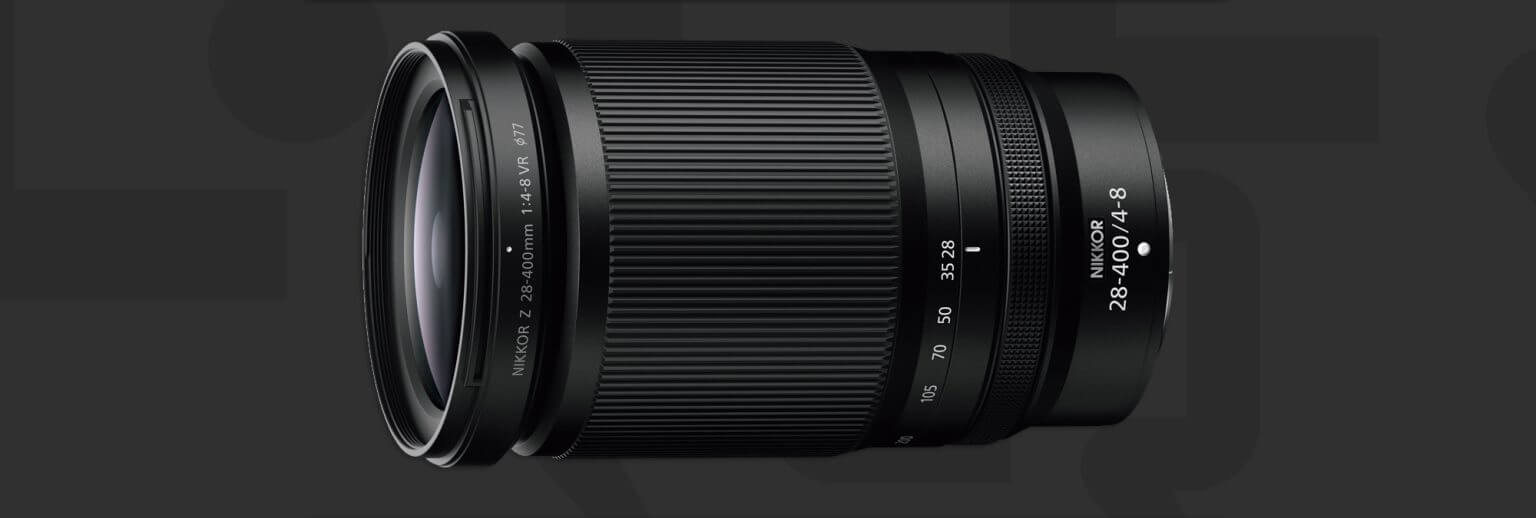MELVILLE, NY (March 27, 2024) Today Nikon Inc. announced the release of the NIKKOR Z 28-400mm f/4-8 VR, a supremely versatile high-power super-zoom lens for Nikon Z series full-frame/FX-format mirrorless cameras. This latest addition to the expanding line of NIKKOR Z lenses offers the highest zoom ratio in its class*1, making it a must-have for travel, sports, backyard wildlife and more.
“So many photographers and creatives will love the versatility of the NIKKOR Z 28-400mm, which gives you clarity, range and fantastic backgrounds,” said Naoki Onozato, President and CEO, Nikon Inc. “Wherever your travels lead, this is definitely a lens to consider packing.”
The NIKKOR Z 28-400mm f/4-8 VR is a high-magnification zoom lens that covers a broad range of focal lengths — from 28mm to 400mm. Whether up close or far away, from landscapes to distant vistas, users will appreciate the extreme versatility and powerful capabilities of the 14.2× zoom. Although it is a super-telephoto zoom lens with a range up to 400mm, it’s also the lightest in its class*1, weighing only approximately 1.6 lbs (725 g), making it easy to carry when traveling.
This new lens also has a remarkably close minimum focus distance*2 of only 7.8 in. (0.2 m) at the maximum wide-angle position and 3.9 ft. (1.2 m) at the maximum telephoto position. The maximum reproduction ratio of 0.35x lets users capture close-ups at short distances for food, flowers and animals. When shooting far away, users can fill the frame with their subject and still have a pleasing blurred background.
The NIKKOR Z 28-400mm f/4-8 VR uses a stepping motor (STM), which enables fast and quiet autofocusing, allowing rapid focus on moving subjects. The lens also features a vibration-reduction (VR) function with performance equivalent to 5.0 stops, which helps achieve sharp photos and stable video with ease, even when handheld.*3
Primary features of the NIKKOR Z 28-400mm f/4-8 VR
- Covers a broad range of focal lengths— from 28mm to 400mm, with a 14.2× zoom which is a first among NIKKOR Z lenses.
- A minimum focus distance of 0.2 m at the maximum wide-angle position and a maximum reproduction ratio of 0.35× allow users to get closer to their subjects for dynamic expression.
- A total length of approx. 5.57 in. (141.5 mm) and a weight of approx. 1.6lbs (725g)– the lightest lens in its class– make this an easy lens to carry and shoot hand-held.
- Stable VR performance equivalent to a 5.0-stop increase in shutter speed effectively reduces blurring in dimly lit surroundings and with hand-held shooting. When paired with a compatible camera, Synchro VR can be activated to achieve up to 5.5-stop stabilization*4 by combining in-camera VR and lens VR.
- Stepping motor (STM) enables high-speed AF drive.
- Support for linear MF drive enables smooth focusing, which is especially useful for video shooting.
- Comes with a compact, square lens hood that combines superior performance and usability.
- Designed to be dust- and drip-resistant with thorough sealing on various portions including movable parts of the lens barrel to keep dust and water droplets from entering the lens.*5
Price and Availability
The new NIKKOR Z 28-400mm f/4-8 VR lens will be available in mid-April for a suggested retail price of $1299.95*. For more information about the latest Nikon products, including the vast collection of NIKKOR Z lenses and the entire line of Z series cameras, please visit Nikonusa.com.
|
When you purchase through links on our site, we may earn an affiliate commission. Here's how it works. |


I wonder which Pink Colored Glasses program they've been using to "calculate" them.
Btw I still wait for my RF 200-800... :( Germany and/or Europe seems to be much less attractive for Japanese camera makers than it still was a decade ago, so we are the last ones to get new lenses - okay, people living in Tierra del Fuego may have to be even more patient, I guess.
Vintage Nikon 52mm CC30R Red Color Compensating Correction Camera Lens Filter | eBay
The Nikon 300mm f/4E PF ED VR Test: Or Why I Don’t Test Just One Copy
This was not a downward outlier at the beginning of the production of that particular 300 mm lens. More than ten years ago, a thorough and rare lab test of superteles in a German photozine showed that Nikon teles from 300 to 500 mm suffered from decentered lenses. Consequently my wife, a Nikonian, decided to buy a Sigma 500 mm f/4.5 because that lens outperformed optically Nikon's actual 500 mm f/4 back then.